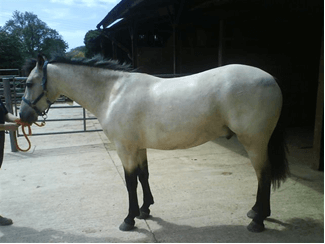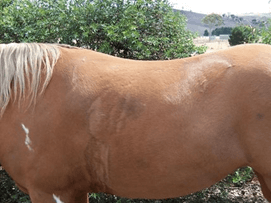
This is the first of a series of articles that we will feature on our blog that aims to explain to our client’s what to expect from a saddle fitting assessment. Our appointed saddle fitters are available for consultation, to conduct an assessment for both you and your horse It is essential that you discuss your requirements and expectations with them, they will ask for any relevant history which may have a physical effect on saddle fit and assess the profile of your horse in relation before trialling any Bliss saddles. It is their knowledge and expertise that when transmitted back to us allows us to create exactly the right saddle for your requirements It should be a pleasant experience and below are tips to help the understanding of how best you and your fitter can benefit from the process.
Our mission at Bliss is to achieve the ultimate in your horses comfort and performance. We believe wholeheartedly that the importance of a correctly fitted saddle for both horse and rider can never be over emphasised and can never be bettered. It is THE connection that is all important. When both of you are comfortable, supported and in the correct balanced position a bond is created that enhances and develops performance and harmony.
Our consultants will be on hand in the months and years to come for your after care service and to see the development of your horse and of course we are always available to answer any questions directly either by email or telephone.
The Art of Saddle Fitting. Part 1

Guest blogger – Kay Hastilow Master Saddler’
Kay is a Master saddler, Qualified saddle Fitter and Past President of The Society of Master Saddlers.
Horse assessment.
When your saddle fitter arrives at your barn, the first thing that they should do, after introductions of course, is assess the horse. Some will come and just start putting saddles on to the horse’s back but I would suggest that these people are more saddle sellers than fitters. If the saddle doesn’t drop on the wither or sit way above it, they consider it a good fit.

A quality fitter will have taken some details from you before their visit. On arriving at your barn, having greeted you and your trainer, they will take a good look at and around your horse. Why? Well, here are some of the things that they will be looking at & taking in to consideration before trying saddles on.
Good conformation?

What condition is he in, and is this likely to change?

Is he ‘uphill’ or croup high?
Is his back short, long or middling?
Is his age a factor in the fitting- youngsters of course will change shape but changes in the older horse can be considerable.
What shape are his shoulders? Prominent shoulders, for example, may cause some problems if a jumping saddle is required.
Are they level? Many horses’ shoulders are set with one further back or higher than the other.

Where is the girth groove in relation to the shoulders? If forward set, the saddle will tend to run forward onto the shoulder and neck & steps will have to be taken to combat this problem.
What shape are the withers? High or flatter, long or short?


What shape and width is his spine? The ‘dorsal spinal processes’, the bits that you actually feel if you run your fingers down his back are actually attached to the spinal column but are not the spine it’s self. These can be very wide or very narrow, or somewhere between these extremes.


At the ‘base’ of the spine, in other words the bit of the back either side of the dorsal spinal processes where the ribs make the shape, there can be big differences in the angles. ‘Well sprung’ ribs will give a broad flat platform for the saddle, sometimes even causing the saddle to move forward. ‘Steepled’ ribs, on the other hand are, as the name suggests, like a church steeple with very flat sides & little to support the saddle, causing it to drop much lower on to the back than you would expect. This will affect the style & shape of tree that will be chosen for your saddle.
How well & evenly developed is the horse behind the shoulders?
What shape is his lower line? Herring gutted is a shape that is quite common in a fit eventer and can cause problems keeping the saddle in place rather than running back. A very round belly, of course, will tend to push the saddle forward on to the shoulders.
The fitter will also check the saddle and girth area for any areas of discomfort, lumps bumps & rubs. This will obviously tell of any existing problems but can often lead to the saddle fitter being able to predict how the saddle being used actually fits, and guide them to any possible problems with the way the horse and / or the rider moves the saddle in use.
After this initial inspection the saddler will ask to see the horse move, usually in hand. This is to see if there are any abnormalities in the gait, unimportant in themselves, but could have an effect on the saddle sitting straight or possibly moving to one side, forward or back.
The saddler should ask for a history of the horse, wishing to know how long you have had him, his level of fitness and if he has had any injuries. Strained tendons & ligaments, even when completely healed can still cause the saddle to drift to one side & knowledge of the injury will allow the saddle fitter to be particularly aware & look out for any detrimental effect to the saddle fit.
It would also be sensible to make the saddle fitter aware of any injuries you have had. Most riders have sustained some injuries in their career and these too can have an effect on a saddle fit.
So, as you can see, this initial assessment is really important to the saddle fitter in supplying a well fitting saddle that is going to really work for you, as the information gained will determine tree type, panel shape, positioning of girth straps and type of girth needed as well as ascertaining whether the type of saddle you would like, in the size you want it is a possibility or if a compromise may be needed. If this should be the case, you will have been made aware of the difficulties as the assessment was being done, so that you completely understand what is being said.

All this before a saddle has even been brought out of the fitter’s vehicle!

